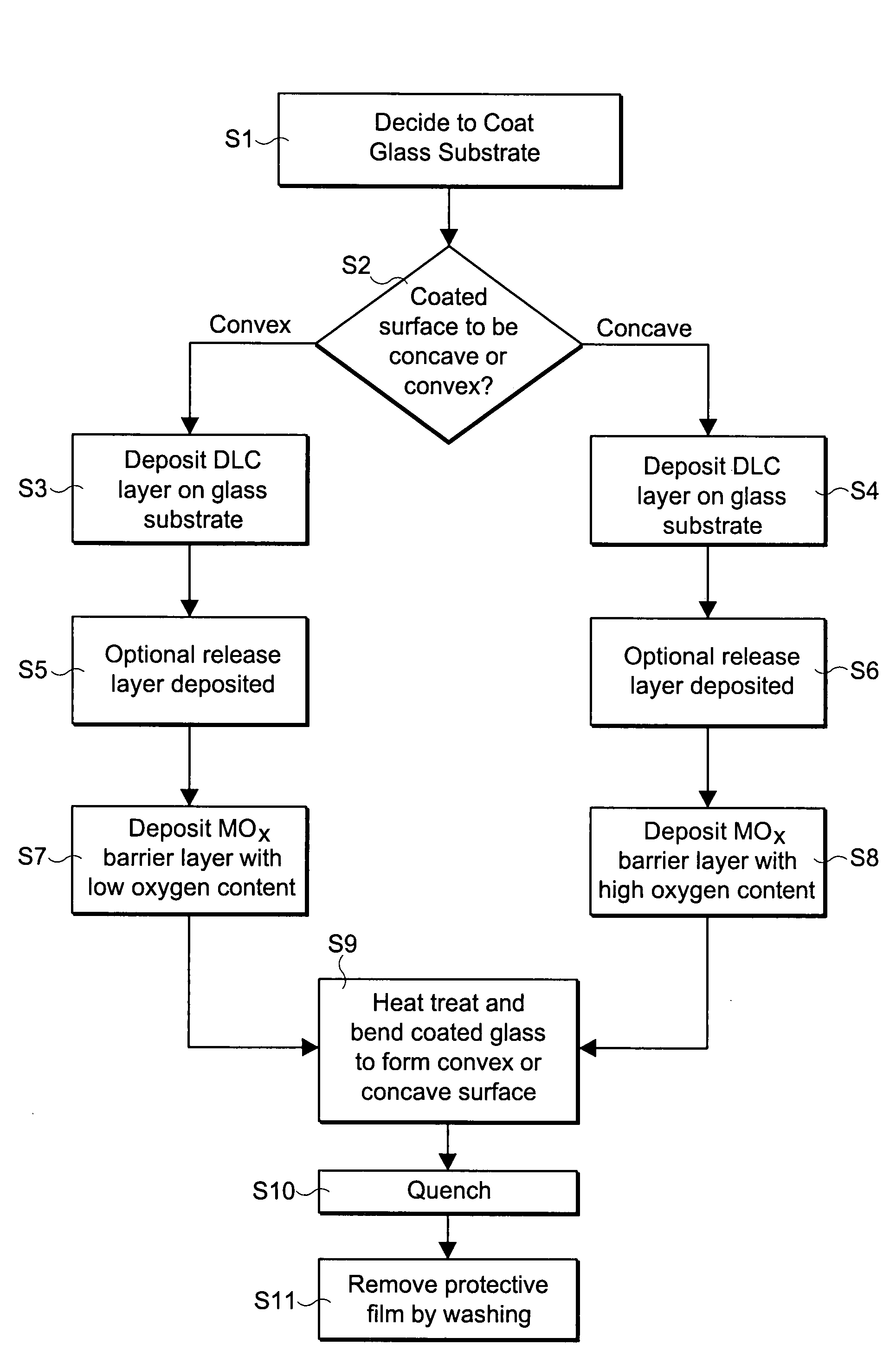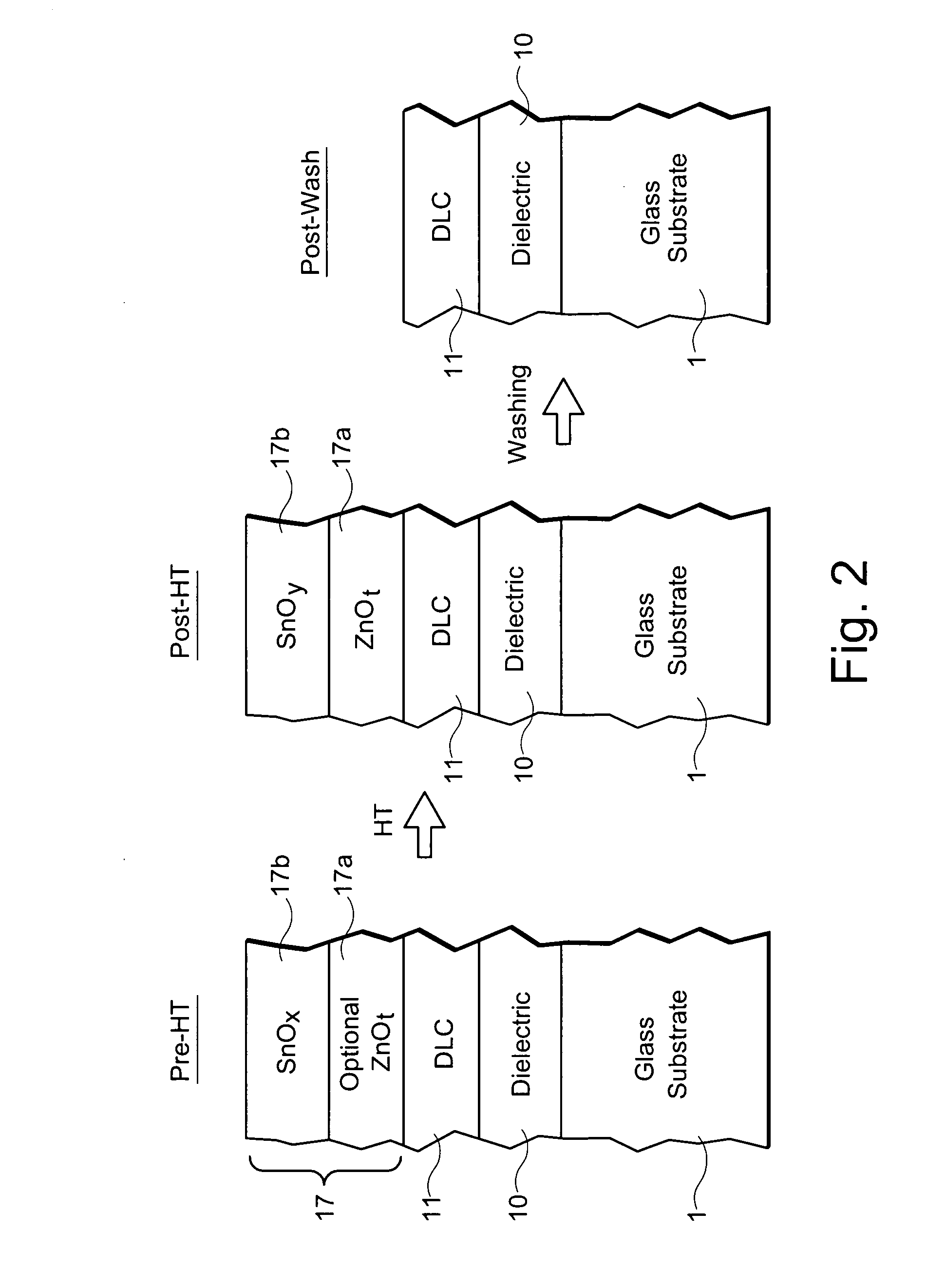Method of making heat treated coated article using diamond-like carbon (DLC) coating and protective film with oxygen content of protective film based on bending characteristics of coated article
a diamond-like carbon and coating technology, applied in the direction of vacuum evaporation coating, coating, chemical vapor deposition coating, etc., can solve the problems of dlc as a protective overcoat not being able to withstand heat treatment (ht), dlc tends to oxidize and burn off, and the layer can buckle, so as to prevent significant burnoff and/or degradation, the effect of high oxygen conten
- Summary
- Abstract
- Description
- Claims
- Application Information
AI Technical Summary
Benefits of technology
Problems solved by technology
Method used
Image
Examples
Embodiment Construction
[0017]Referring now more particularly to the accompanying drawings in which like reference numerals indicate like parts throughout the several views.
[0018]Certain example embodiments of this invention relate to methods of making coated articles that may use heat treatment (HT), wherein the coated article includes a coating (one or more layers) including diamond-like carbon (DLC). In certain instances, the HT may involve heating a supporting glass substrate, with the DLC thereon, to or in a temperature(s) of from 550 to 800 degrees C., more preferably from 580 to 800 degrees C. (which is well above the burn-off temperature of DLC). In particular, certain example embodiments of this invention relate to a technique for allowing the DLC to withstand such HT without significantly burning off during the same. In certain embodiments, a sacrificial protective film is formed on the glass substrate over the DLC so as to reduce the likelihood of the DLC burning off during HT. Thus, the majorit...
PUM
| Property | Measurement | Unit |
|---|---|---|
| thickness | aaaaa | aaaaa |
| temperature | aaaaa | aaaaa |
| transparent | aaaaa | aaaaa |
Abstract
Description
Claims
Application Information
 Login to View More
Login to View More - R&D
- Intellectual Property
- Life Sciences
- Materials
- Tech Scout
- Unparalleled Data Quality
- Higher Quality Content
- 60% Fewer Hallucinations
Browse by: Latest US Patents, China's latest patents, Technical Efficacy Thesaurus, Application Domain, Technology Topic, Popular Technical Reports.
© 2025 PatSnap. All rights reserved.Legal|Privacy policy|Modern Slavery Act Transparency Statement|Sitemap|About US| Contact US: help@patsnap.com



